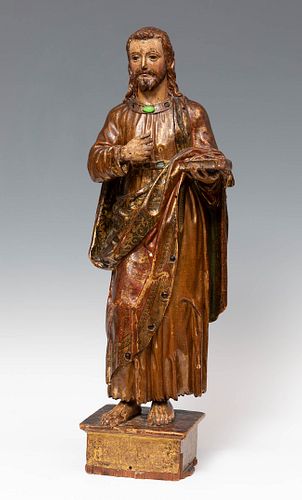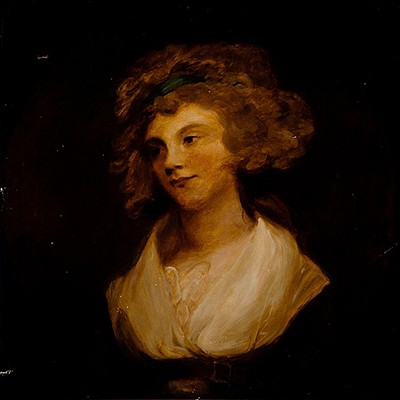Romanist school; second half of the 16th century. "Saint John the Baptist". Carved wood, polychrome and stewed.
About Seller
Carrer Aragó 346
Barcelona
Spain
Setdart Subastas was born in 2004 and is currently the first online art auction in Spain with solidity, prestige and reliability guaranteed by our more than 60,000 users. Setdart has a young, dynamic and enterprising team ready to successfully manage the purchase and sale of art works through custom...Read more
Two ways to bid:
- Leave a max absentee bid and the platform will bid on your behalf up to your maximum bid during the live auction.
- Bid live during the auction and your bids will be submitted real-time to the auctioneer.
Bid Increments
| Price | Bid Increment |
|---|---|
| EUR€0 | EUR€10 |
| EUR€200 | EUR€25 |
| EUR€500 | EUR€50 |
| EUR€1,000 | EUR€100 |
| EUR€3,000 | EUR€200 |
| EUR€5,000 | EUR€500 |
| EUR€10,000 | EUR€1,000 |
| EUR€20,000 | EUR€2,000 |
| EUR€50,000 | EUR€5,000 |
About Auction
Nov 25, 2021
Setdart Auction House sofia@setdart.com
- Lot Description
Romanist school; second half of the 16th century. "Saint John the Baptist". Carved wood, polychrome and stewed. It presents faults and later additions. Measurements: 72 x 24 x 16 cm. Hieratic and through sweetened features the author represents in this sculpture of round bulk, the figure of St. John the Baptist. Arranged on a pedestal stands the body of the saint, which does not present any iconographic attribute except for the book he holds in his right hand. Due to the aesthetic characteristics of the carving, this work can be inscribed within the Romanist school, which is defined as a current of Spanish mannerism that shows a marked influence of the Italian authors who worked in Rome, especially Raphael and Michelangelo. The romanist style is especially characterized by its monumentality and powerful anatomies, features that can be clearly appreciated in this carving. In fact, the monumentality of the figure is reinforced by the wide folds of the clothes, which announce the chiaroscuro sense of the baroque. The expressiveness is however clearly mannerist, restrained and conventional, closer to the conceptualism of the sixteenth century than to the more naturalistic and dramatic images of the baroque. John the Baptist was the son of the priest Zechariah and Elizabeth, cousin of the Virgin Mary. He retired very young to the desert of Judea to lead an ascetic life and preach penance, and recognized in Jesus, who was baptized by him, the Messiah announced by the prophets. A year after the baptism of Christ, in the year 29, John was arrested and imprisoned by the tetrarch of Galilee Herod Antipas, whose marriage with Herodias, his niece and sister-in-law, he had dared to censure. Finally St. John was beheaded, and his head given to Salome as a reward for his beautiful dances. This saint appears in Christian art with two different aspects: as a child, a playmate of Jesus, and as an adult, an ascetic preacher. The adult St. John that we see here appears dressed in oriental art with a camel skin sackcloth, which in the West was replaced with a sheepskin that leaves his arms, legs and part of his torso bare. The red cloak he wears at times, as well as in the scene of his intercession at the Last Judgment, alludes to his martyrdom. In Byzantine art he is depicted as a large-winged angel, with his severed head on a tray which he holds in his hands. However, his attributes in Western art are very different. The most frequent is a lamb, which alludes to Jesus Christ, and he often carries a cross of reeds with a phylactery with the inscription "Ecce Agnus Dei".
Dimensions:
INV Number:
72 x 24 x 16 cm.
35121912 - Shipping Info
-
In-house shipping available. Please inquire at admin@setdart.com.
-
- Buyer's Premium



 EUR
EUR CAD
CAD AUD
AUD GBP
GBP MXN
MXN HKD
HKD CNY
CNY MYR
MYR SEK
SEK SGD
SGD CHF
CHF THB
THB

















